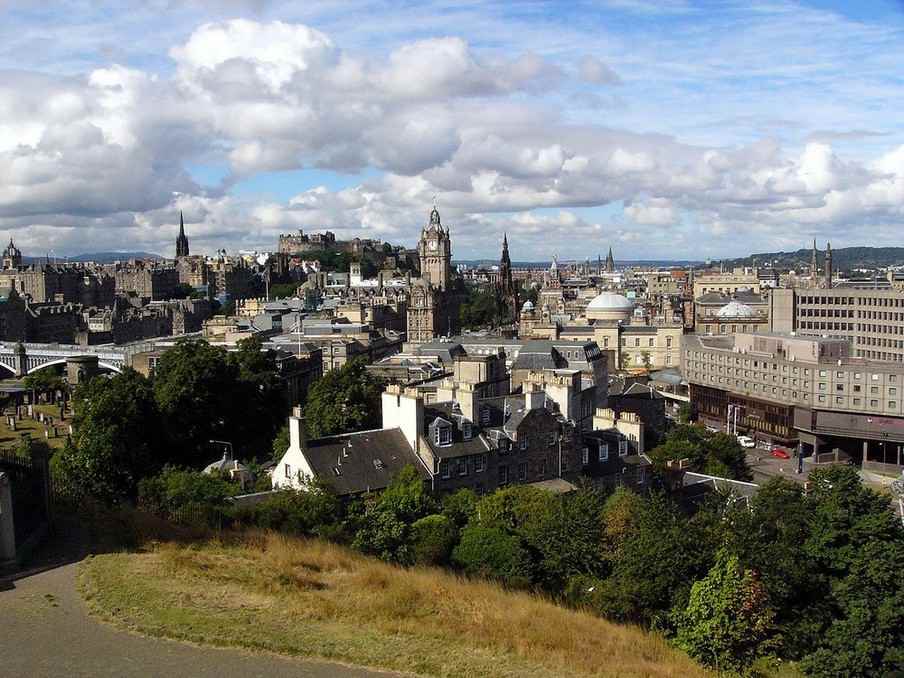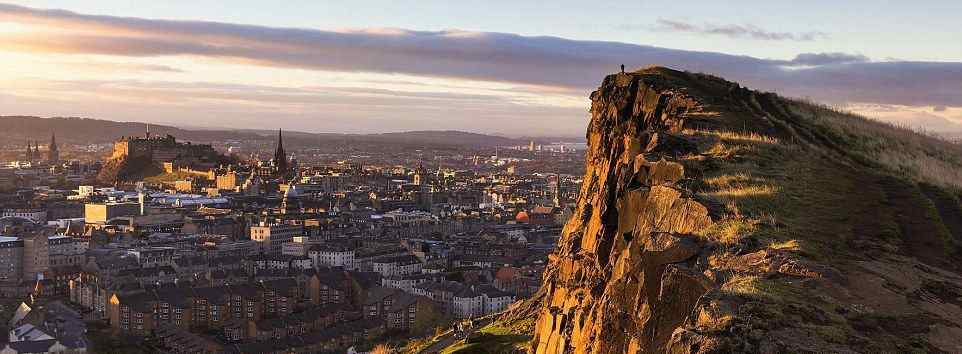Located on the south coast of the Firth of Forth Edinburgh Bay, Scotland is the capital and second the most populous city in the UK, as well as the largest financial center in the UK after London. Young people, artisans, artists and everyone worried about how to get federal job rush here in search of prospects for financial and social growth.
Today, Edinburgh is a popular tourist city attracting millions of tourists from all over the world. The city is famous for a huge number of historical and architectural monuments, an abundance of entertaining museums and many cultural events. The famous Edinburgh Festival is the largest in the world among such annual events.
Foundation of the city
The first settlements on the lands of today’s Edinburgh existed in the Mesolithic era. Excavations also revealed the remains of settlements dating from the late Bronze and Iron Ages.
In the 1st century AD, when the Romans arrived in Lothian (a historical area in the southeast of Scotland), a Celtic tribe of Britons lived here, to whom they gave the name of the moor’s. After the departure of the Romans in the 5th century A.D. in the territory of modern Lothian and the regions adjacent to it (the exact borders are not known for certain) the British kingdom Gododin existed. Most likely it was founded by the descendants of those same moors. Around the 6th century, the Gododins built the Din Eidyn or Etin fortress, and although its exact location was not identified, historians suggest that it was around it that Edinburgh subsequently grew. The fortress most likely could be located both on Castle Rock and Mount Arthur, and possibly Mount Calton. In 638, the fortress was besieged by the troops of King Oswald of Northumbria, and as a result more than three centuries fell under the control of the Anglo-Saxons, until in the middle of the 10th century it passed to Scotland. In the Chronicles of the Picts, the fortress is referred to as “oppidum Eden.”

Middle Ages
At the beginning of the 12th century, cities as such did not yet exist in Scotland. After David I ascended the throne in 1124, he initiated the foundation of the so-called “royal burgh”, which literally means “a royal city with self-government” (which, of course, implied a number of special privileges). Edinburgh became one of these “royal burghs” around 1130.
Despite constant claims from England and, as a result, protracted wars for the independence of Scotland, the city gradually grew and developed. After Scotland lost its main trading port, Berwick, most of the lucrative export flow was diverted through Edinburgh and its port of Lith.
By the middle of the 15th century, the status of the “capital” was firmly entrenched in the city. In the same period, the construction of protective fortress walls begins, clearly defining the boundaries of the city, which today corresponds to the Old Town district. Since the fenced area was relatively small, the Old Town is characterized by very narrow streets and high-rise buildings. In 1544, as a result of the British attack, the city suffered serious damage, but quickly recovered.
In the 16th century, Edinburgh became the epicenter of the Scottish Reformation, and already in the 17th century – the center of the Covenant movement (by this time Scotland was already in the so-called “Union of Crowns” with England, although it still had its own parliament, located in Edinburgh) . By the first half of the 18th century, Edinburgh was known as a major banking center, as well as one of the most densely populated cities in Europe with terrifying unsanitary conditions, which was largely due to excessive population growth in tight spaces (15th-century fortress walls still strictly protect borders cities).
New time
In the second half of the 18th century, large-scale construction of the “New City” begins and Edinburgh significantly expands its borders. Soon the city became the center of Scottish enlightenment, one of the most prominent representative, which was the world famous economist and philosopher Adam Smith. The 19th century was for Edinburgh the “century of industrialization,” although its pace was much lower than in Glasgow. As a result, Glasgow became Scotland’s largest city and its industrial and commercial center. Edinburgh remained the administrative and cultural center.









Leave a Reply